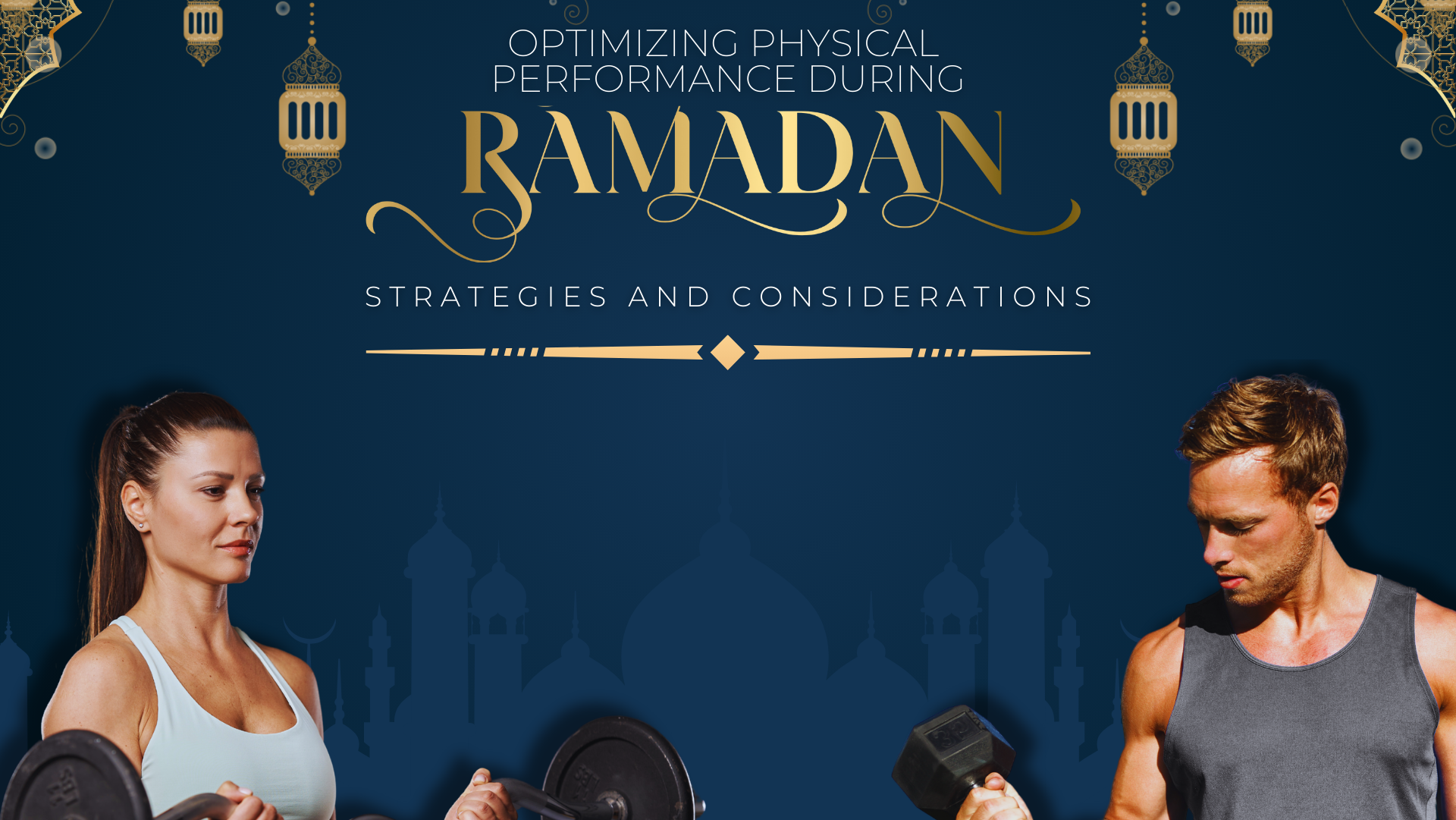
Optimizing Physical Performance During Ramadan: Strategies and Considerations
Understanding Ramadan and Fasting
Ramadan, the sacred month of fasting observed by Muslims worldwide, entails abstaining from food and drink from dawn until sunset. Beyond its spiritual significance, Ramadan fasting prompts alterations in daily routines, including those related to physical training, nutrition, body composition, and sleep patterns. If you haven’t already, we suggest reading our previous blog post on the motives and experiences of Ramadan in the modern era. You can find it by clicking here.
Fasting during Ramadan aligns with the concept of intermittent fasting, attracting scholarly attention to its effects on physical performance, nutrition, body composition, and sleep.


Impact on Physical Performance
The impact of fasting on exercise during Ramadan presents a variety of difficulties, such as changes in energy, hydration, and nutritional consumption. Research has yielded varying findings concerning its influence on physical performance. Some argue that dehydration and decreased energy availability are responsible for the drop, while others offer possible adjustments that could preserve or even increase performance (Maughan, 2012).
Adjusting training plans to cooler times of the day and concentrating on low- to moderate-intensity workouts can help athletes and fitness enthusiasts observe Ramadan and minimize the negative effects of fasting on performance (Roky et al., 2004).
Nutrition: Ramadan vs. Non-Ramadan Fasting
Comparing Ramadan fasting to non-Ramadan intermittent fasting reveals nuanced similarities and differences. Both entail periods of abstaining from food and drink, but Ramadan fasting encompasses additional spiritual and cultural dimensions, such as the pre-dawn meal (suhoor) and the sunset meal (iftar).
Research comparing Ramadan fasting to other forms of intermittent fasting suggests comparable effects on metabolic health and body composition (Patterson & Sears, 2017). However, the emphasis on hydration and nutrient-rich foods during Ramadan necessitates unique nutritional strategies compared to secular fasting protocols.
Adjusting training plans to cooler times of the day and concentrating on low- to moderate-intensity workouts can help athletes and fitness enthusiasts observe Ramadan and minimize the negative effects of fasting on performance (Roky et al., 2004).


Body Composition
Paying close attention to meal composition and nutrient timing during Ramadan is essential to maintaining or changing body composition. Prioritizing nutrient-dense foods during non-fasting hours is critical for supporting muscle preservation and overall health, even though fasting may result in lower calorie intake and possible weight loss.
Studies examining body composition changes during Ramadan fasting indicate variable outcomes influenced by dietary intake, physical activity levels, and individual metabolic responses (Chaouachi et al., 2009). Strategies such as consuming protein-rich foods during iftar and suhoor and optimizing hydration can help minimize lean mass loss and support fat loss goals during Ramadan.
Adjusting training plans to cooler times of the day and concentrating on low- to moderate-intensity workouts can help athletes and fitness enthusiasts observe Ramadan and minimize the negative effects of fasting on performance (Roky et al., 2004).
Sleep Patterns
The length and quality of sleep can be greatly impacted by the modified eating and sleeping schedules observed during Ramadan. Late-night meals, early-morning prayers, and changes in social schedules cause disturbances for a lot of people.
Studies reveal that although some people might have trouble sleeping, others might adjust and continue to get enough sleep in terms of both quantity and quality (Alzoghaibi, 2011). Ramadan fasting’s negative effects on sleep can be lessened by putting techniques like keeping a regular sleep schedule and setting up a comfortable sleeping environment into practice.
Adjusting training plans to cooler times of the day and concentrating on low- to moderate-intensity workouts can help athletes and fitness enthusiasts observe Ramadan and minimize the negative effects of fasting on performance (Roky et al., 2004).

Conclusion
In summary, Ramadan fasting presents unique challenges and opportunities for individuals striving to maintain physical performance, optimize nutrition, manage body composition, and preserve sleep quality. By understanding the scientific principles underlying these areas and implementing evidence-based strategies, individuals can navigate Ramadan while minimizing disruptions to health and fitness goals. Embracing a holistic approach that balances spiritual observance with physical well-being enables individuals to derive greater benefits from the transformative experience of Ramadan.
References
Alzoghaibi, M. A. (2011). Sleep pattern, daytime sleepiness, and eating habits during the month of Ramadan. *Sleep and Hypnosis, 13*(1-2), 91–97.
Chaouachi, A., Leiper, J. B., Souissi, N., Coutts, A. J., & Chamari, K. (2009). Effects of Ramadan intermittent fasting on sports performance and training: A review. *International Journal of Sports Physiology and Performance, 4*(4), 419–434.
Maughan, R. J. (2012). Fasting and sport: An introduction. *British Journal of Sports Medicine, 46*(7), 466–467.
Patterson, R. E., & Sears, D. D. (2017). Metabolic effects of intermittent fasting. *Annual Review of Nutrition, 37*, 371–393.
Roky, R., Herrera, C. P., Ahmed, Q., & Florez, H. (2004). Association of Ramadan fasting with health and well-being outcomes: A systematic review. *Journal of the American Medical Association, 307*(9), 931–935.
PREPARED BY
ESSAM ABI ROUSTOM
HERC’s Associate


